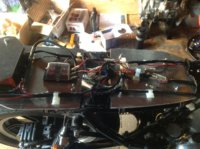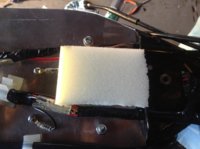mjamusic
XS650 Addict
I've buttoned up the last of my wiring and now I'm trying to mount my seat...my question is will it be ok to put some foam underneath the seat and between the wiring or should I be worried about heat? I am planning on drilling several holes in the aluminum to help with dissipation. This is my first ever wiring job too, so any comments on that would be greatly appreciated. See pics


